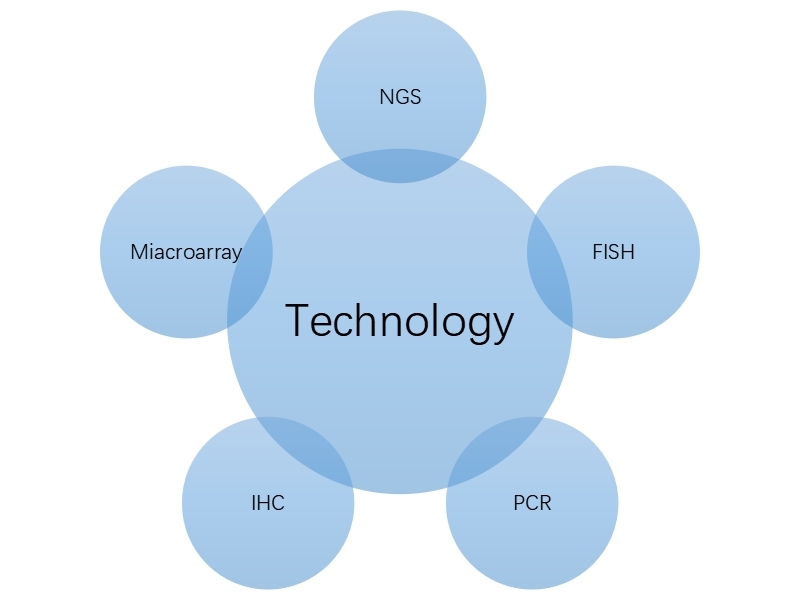Applications of Tumor Profiling
Cutting-edge Technologies for Tumor Profiling
Cancer treatment through the large-scale detection of cancer-associated molecular alterations has been revolutionized by next-generation sequencing (NGS). NGS also has been used for the identification of novel genomic tumor drivers as well as mediators of primary and acquired drug resistance. Therefore, NGS has rapidly become a routine diagnostic tool of medical oncology. Because of NGS, molecular profiling technologies have further advanced at a rapid pace with increased depth and breadth, as well as the spatial and functional resolution of tumor profiling.
Creative Biolabs has built a team of experienced scientists with a powerful platform designed specifically to meet every challenging requirement for tumor profiling. Our technologies allow us to unravel a tumor’s molecular composition at single-cell resolution. We offer sophisticated analysis and provide unique insights into dynamic changes in tumor molecular architecture during tumor progression and under treatment. Our cutting-edge tumor molecular profiling technologies have considerable potential in cancer diagnosis, biomarker discovery, personalized treatment, and prognostic assessment.
Tumor Profiling in Diverse Cancers
Creative Biolabs is well-equipped and versed in tumor profiling. Our technologies for tumor profiling include next-generation sequencing (next-generation sequencing (NGS)), in situ hybridization (FISH), polymerase chain reaction (PCR), immunohistochemistry (IHC), and microarrays.
 Fig.1 Technologies for Tumor profiling. (Creative Biolabs)
Fig.1 Technologies for Tumor profiling. (Creative Biolabs)
Samples sourced from diverse cancers are available, such as breast cancer, non-small cell lung cancer, colorectal cancer, melanoma cancer, pancreatic cancer, brain cancer, ovarian cancer, endometrial cancer, thyroid cancer, and head and neck cancer.
Table 1. Diverse Cancer samples are available.
Applications of Tumor Profiling
Please feel free to contact us for more detailed information.
For Research Use Only | Not For Clinical Use


 Fig.1 Technologies for Tumor profiling. (Creative Biolabs)
Fig.1 Technologies for Tumor profiling. (Creative Biolabs)
 Download our brochure
Download our brochure

